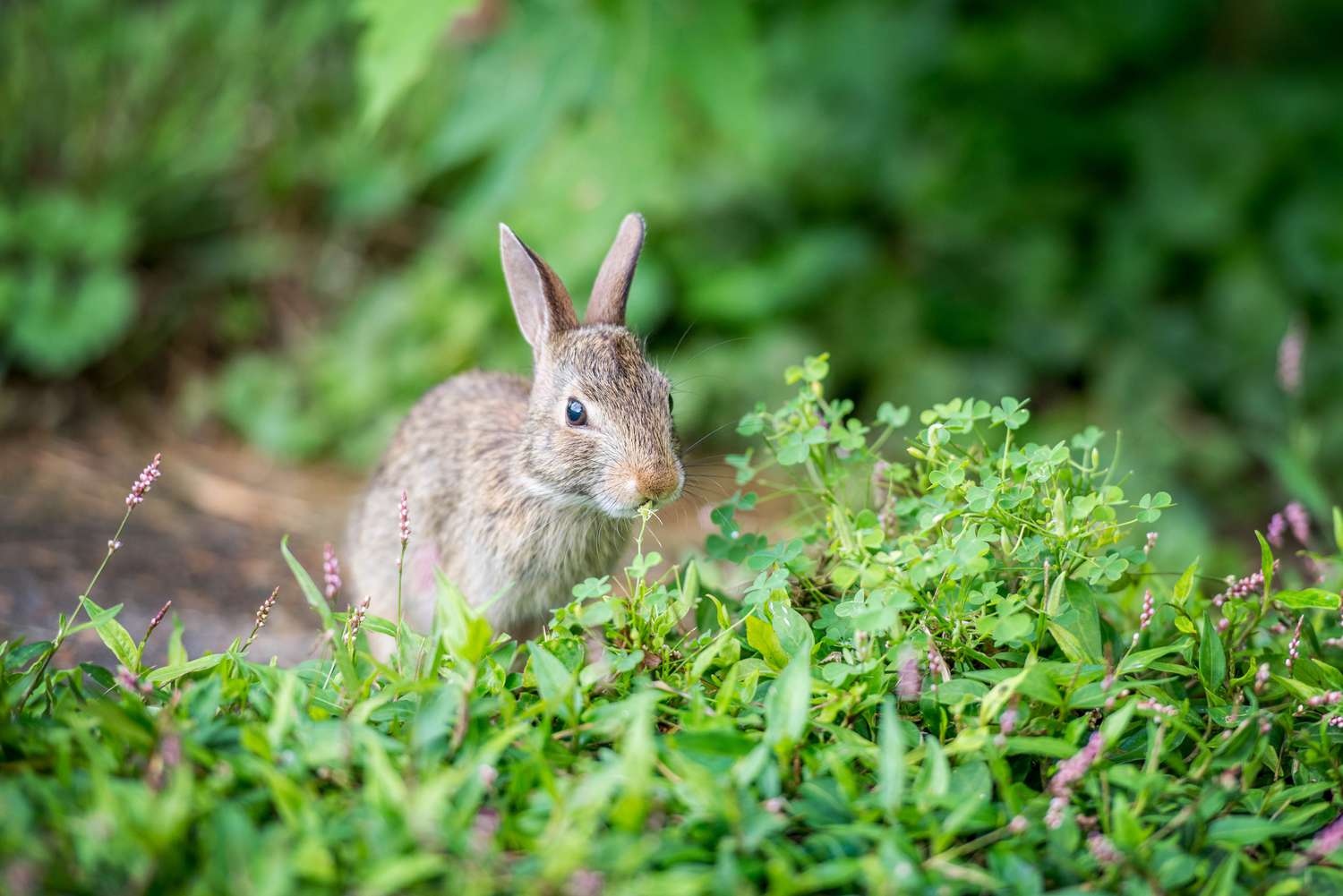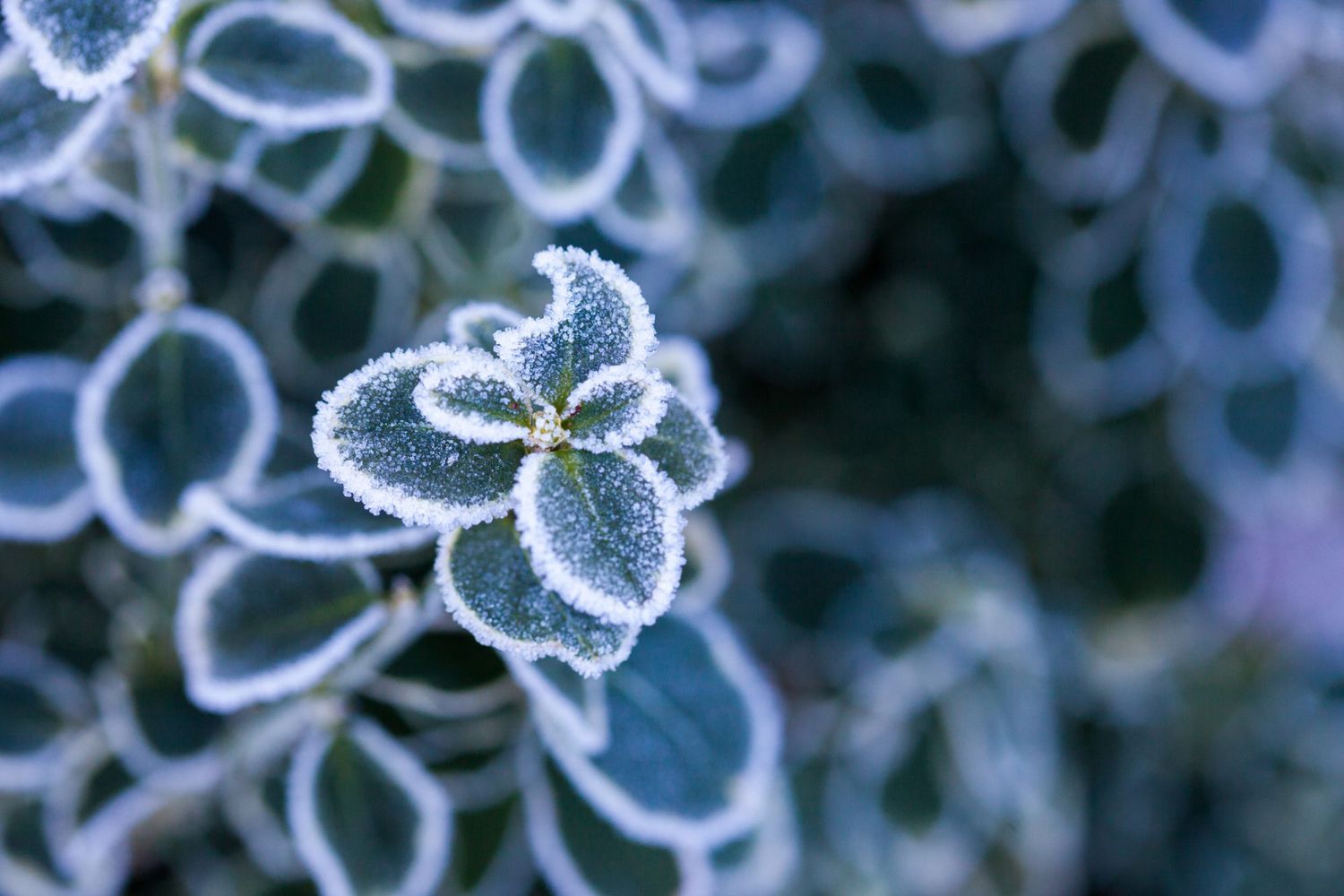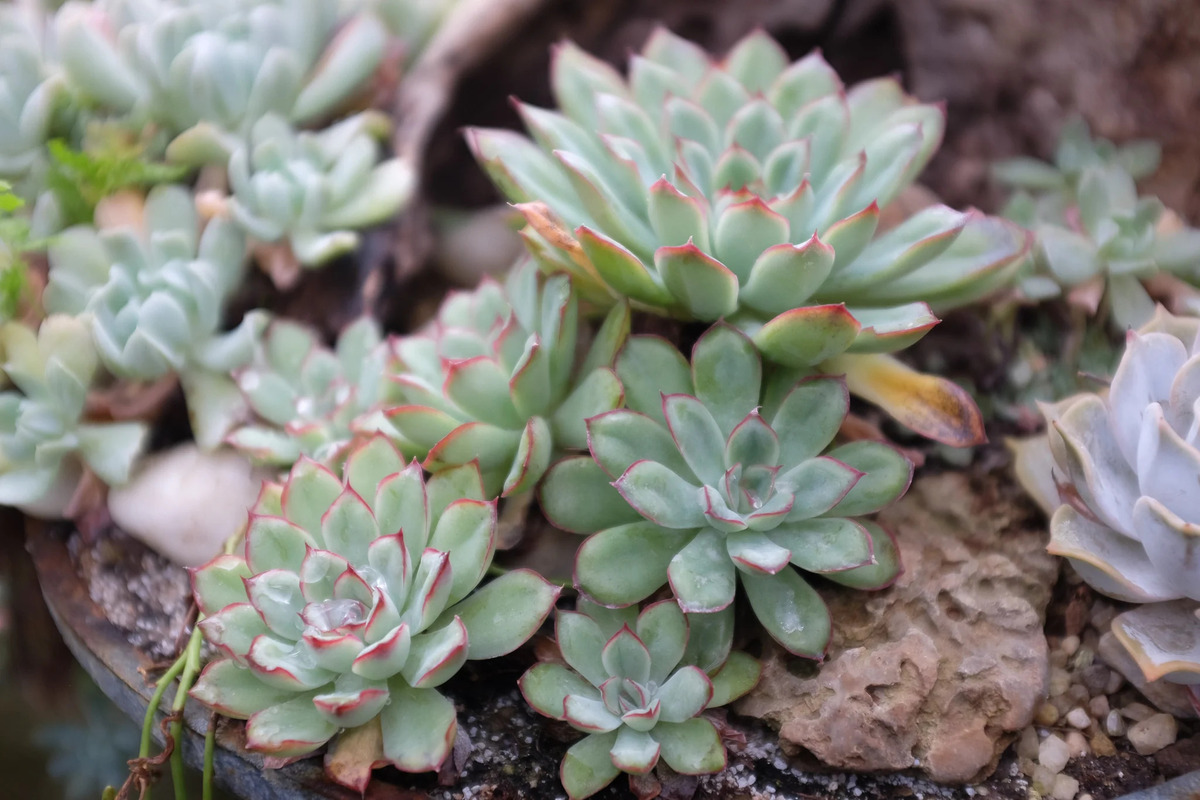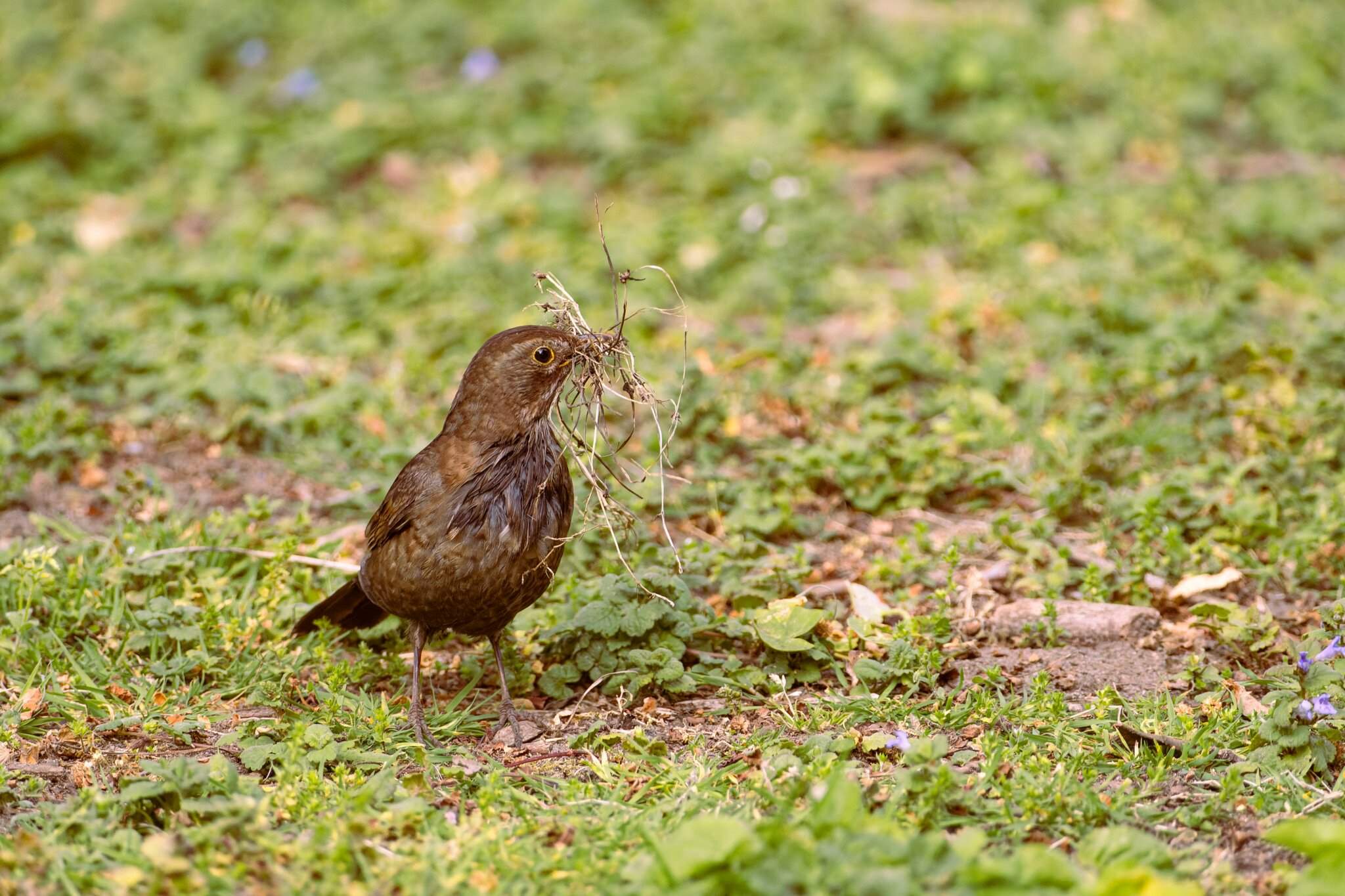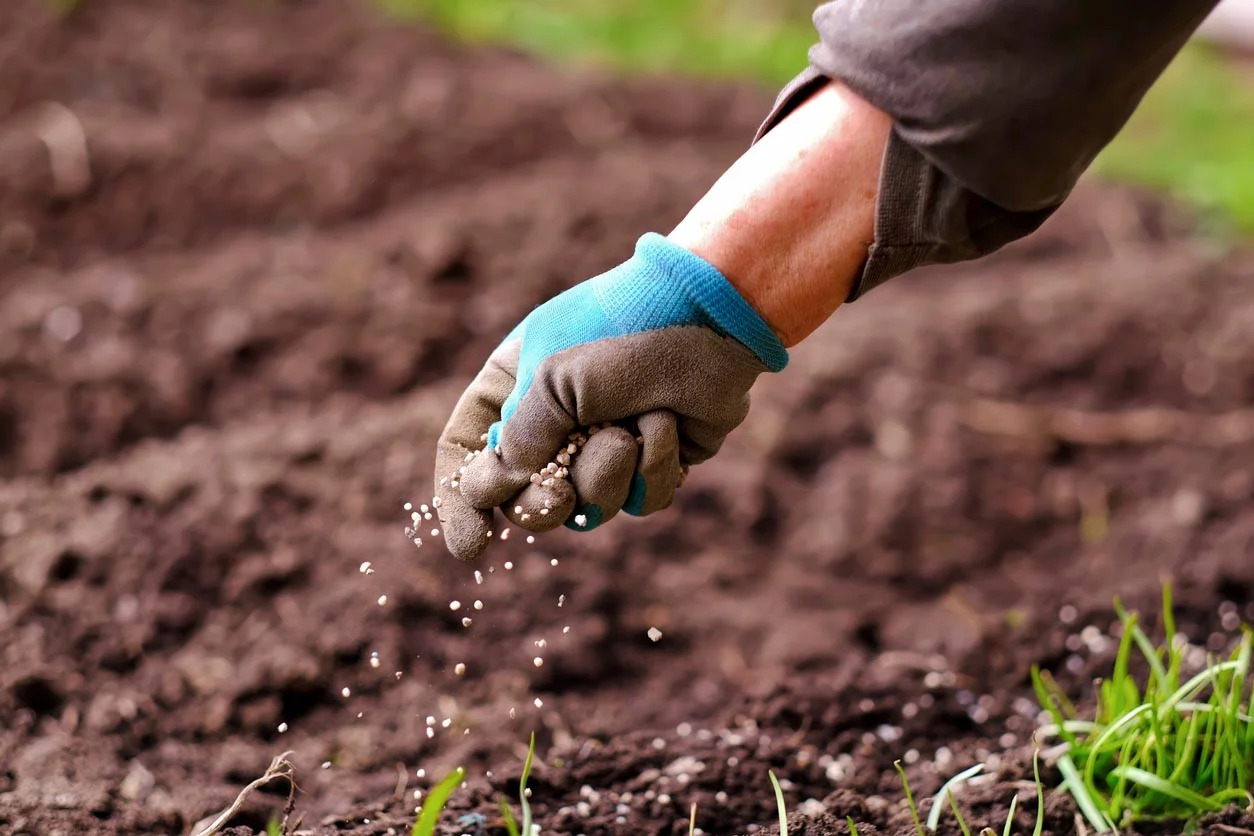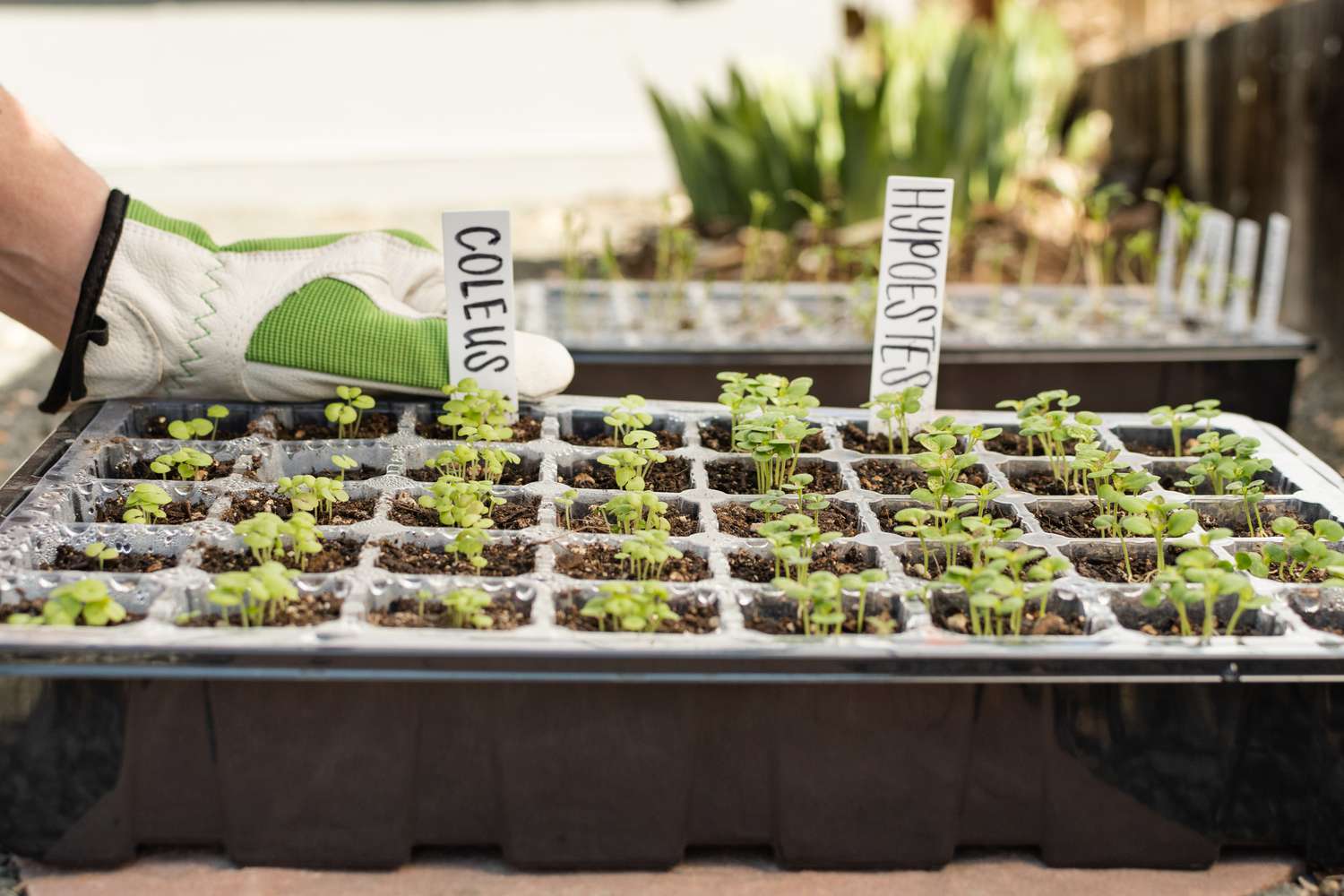Home>Gardening Techniques>Seasonal Gardening>How To Protect Grass Seedlings From Frost


Seasonal Gardening
How To Protect Grass Seedlings From Frost
Published: December 31, 2023
Learn how to protect your grass seedlings from frost with our seasonal gardening tips. Keep your plants safe and thriving all year round.
(Many of the links in this article redirect to a specific reviewed product. Your purchase of these products through affiliate links helps to generate commission for Chicagolandgardening.com, at no extra cost. Learn more)
Table of Contents
Introduction
Welcome to the world of seasonal gardening, where every season brings its own set of challenges and rewards. Whether you’re a seasoned gardener or just starting out, understanding how to protect your grass seedlings from frost is crucial for a successful gardening experience.
Frost can be a gardener’s worst nightmare, as it can damage or even kill delicate seedlings. However, with the right knowledge and techniques, you can ensure the survival and healthy growth of your grass seedlings, even in cold weather.
In this article, we will provide you with a comprehensive guide on how to protect your grass seedlings from frost. We will explore various methods and strategies that will help you create the optimal conditions for your seedlings to thrive, regardless of the temperature outside.
So, whether you’re starting a new lawn, overseeding an existing one, or just looking to boost the health and appearance of your grass, read on to discover how to safeguard your grass seedlings and keep your garden looking lush and green throughout the year.
Now, let’s dive into the fascinating world of seasonal gardening and uncover the secrets to protecting your grass seedlings from frost!
Understanding Frost
Before delving into how to protect your grass seedlings from frost, it’s important to understand what frost actually is and how it affects plants. Frost occurs when the temperature drops below freezing, causing ice crystals to form on surfaces, including leaves and tender plant tissues.
There are two main types of frost that can occur: radiation frost and advection frost. Radiation frost typically occurs on clear nights when heat is radiated away from the ground, causing the temperature to drop. Advection frost, on the other hand, is caused by the movement of cold air masses over a region.
Frost can be damaging to plants because it freezes the water within their cells, leading to cell damage and even cell death. This damage can manifest in various ways, from browning or blackening of leaves to wilting and stunted growth.
It’s important to note that not all plants are equally susceptible to frost damage. Some plants have evolved to be more frost-tolerant, while others are more sensitive and require extra protection. Understanding the frost tolerance of your grass seedlings is crucial in determining the level of protection they will need.
Additionally, the timing of frost is critical. Early spring and late autumn are the periods when frost is most likely to occur. Monitoring weather reports and having a good understanding of your local climate patterns will help you anticipate and prepare for frost events.
Now that you have a better understanding of what frost is and its potential impact on your grass seedlings, let’s move on to the next section, where we will discuss how to prepare the soil for optimal growth and protection.
Preparing the Soil
Preparing the soil is a crucial step in ensuring the success of your grass seedlings, especially when it comes to protecting them from frost. Healthy soil provides a strong foundation for the roots to establish and grow, making the seedlings more resilient to extreme temperature fluctuations.
Here are some key steps to prepare the soil before planting your grass seedlings:
- Test the soil: Start by testing the soil’s pH and nutrient levels. Grass generally thrives in slightly acidic soil with a pH range of 6 to 7. Adjust the pH if needed by adding amendments like lime or sulfur.
- Improve soil structure: Incorporate organic matter like compost or well-rotted manure into the soil. This helps improve its texture, drainage, and nutrient-holding capacity. Work the organic matter into the top 6 to 8 inches of soil.
- Remove any debris: Clear the area of rocks, weeds, and any other debris that may hinder the growth of your seedlings. This will create a clean and conducive environment for the young plants.
- Aerate the soil: If the soil is compacted, use a garden fork or a powered aerator to loosen it. This promotes better root development and water infiltration.
- Level the ground: Smooth out any uneven areas by raking the soil to create a level surface. This ensures an even distribution of water and prevents waterlogging or drainage issues.
By taking the time to properly prepare the soil, you are setting the stage for healthy and robust grass growth that can withstand frost and other environmental stressors.
Next, let’s move on to the section where we will discuss the proper techniques for planting your grass seedlings.
Planting Grass Seedlings
Planting grass seedlings correctly is essential for their survival and ability to withstand frost. By following these steps, you can ensure that your seedlings have the best start.
- Choose the right time: Planting grass seedlings should be done during the appropriate season for your specific grass variety. Consult your local gardening resources or experts to determine the best time for planting in your area.
- Prepare seedbed: Rake the soil to create a smooth and level seedbed. Remove any debris, rocks, or weeds that can obstruct the growth of your seedlings.
- Sow the seeds: Follow the recommended seeding rate for your grass variety. Spread the seeds evenly using a seed spreader or by hand. Lightly rake the soil afterward to cover the seeds with a thin layer of soil. Alternatively, you can lightly tamp down the soil to ensure good seed-to-soil contact.
- Water thoroughly: After planting, water the area gently but thoroughly to ensure that the seeds are moist. Avoid saturating the soil, as this can lead to waterlogging and hinder seed germination.
- Keep the soil moist: During the germination period, it’s essential to keep the soil consistently moist. Water the seedbed as needed, taking care not to let it dry out. Avoid overwatering, as this can lead to fungal diseases.
- Monitor growth: Keep a close eye on the seedlings as they emerge. Once they reach a height of around 2 inches, it’s time to adjust your watering routine. Water deeply, but less frequently, to encourage deep root growth.
- Fertilize wisely: As the seedlings continue to grow, consider applying a slow-release fertilizer to provide them with the necessary nutrients. Follow the manufacturer’s instructions for proper application rates.
By following these planting techniques, you can optimize the chances of your grass seedlings establishing a strong root system and developing into healthy, resilient plants that can better withstand frost and other environmental challenges.
Next, we will explore different grass varieties that are specifically bred to be frost-tolerant.
Choosing Frost-Tolerant Grass Varieties
When it comes to protecting your grass seedlings from frost, selecting the right grass variety can make a significant difference. Some grass varieties are naturally more tolerant to frost and can withstand colder temperatures better than others. Here are a few frost-tolerant grass varieties to consider:
- Kentucky Bluegrass: Kentucky Bluegrass is known for its excellent cold tolerance, making it a popular choice for colder climates. It establishes a dense, lush turf that can withstand frost and bounce back quickly in the spring.
- Tall Fescue: Tall Fescue is known for its adaptability and tolerance to various climate conditions, including frost. This grass variety has a deep root system, making it more resilient to cold and able to recover from frost damage.
- Ryegrass: Ryegrass, both annual and perennial varieties, are known for their quick germination and ability to establish rapidly. Perennial ryegrass, in particular, has good cold tolerance and can survive frosty conditions.
- Fine Fescue: Fine Fescue varieties, such as Chewings Fescue and Hard Fescue, are excellent choices for colder regions. They have good cold tolerance and can maintain their color and growth even in frosty conditions.
- Bentgrass: Bentgrass is known for its fine texture and cold tolerance. It thrives in colder regions and can withstand frost and freezing temperatures better compared to other grass varieties.
When selecting a frost-tolerant grass variety, consider the climate and environmental conditions of your area. Some grasses perform better in cooler regions, while others are more suitable for milder climates. Consulting with local gardening experts or professionals can help you identify the best grass varieties for your specific location.
In the next section, we will discuss additional measures, such as applying mulch and using protective covers, to further safeguard your grass seedlings from frost.
Applying Mulch
One effective method to protect your grass seedlings from frost is by applying mulch. Mulch acts as an insulation layer, helping to regulate soil temperature and prevent temperature fluctuations that can harm the young plants. Here’s how you can effectively apply mulch to protect your grass seedlings:
- Choose the right mulch: Select a suitable mulch material, such as straw, shredded leaves, or wood chips. Avoid using mulches that can compact over time, like large chunks of bark, as they may hinder seedling growth.
- Prepare the seedbed: Before applying mulch, make sure the seedlings have emerged and are a few inches tall. Clear out any weeds or debris from the area.
- Apply a thin layer: Spread a thin layer of mulch around the base of the seedlings. Aim for a thickness of about 1 to 2 inches. Ensure that the mulch does not directly touch the grass stems, as this could promote disease or pest issues.
- Extend the mulch coverage: Extend the mulch coverage beyond the immediate area around the seedlings. This helps to insulate a larger soil area and create a more stable microclimate for the young plants.
- Monitor moisture levels: Regularly check the moisture levels of the soil beneath the mulch. While mulch helps retain moisture, it’s important to ensure that the soil does not become overly saturated, which can lead to root rot.
- Adjust mulch as needed: As the seedlings grow, you may need to adjust the mulch layer to maintain an appropriate thickness. Add more mulch if necessary, but be mindful not to smother the grass.
- Remove mulch gradually in spring: As the threat of frost diminishes and the weather warms up, gradually remove the mulch layer. This allows the seedlings to acclimate to the changing temperature and encourages healthy growth.
Applying mulch not only provides insulation against frost but also helps conserve moisture, suppress weed growth, and improve the overall health of your grass. It’s a simple yet effective technique to protect your seedlings and promote their successful establishment.
Next, let’s explore the use of protective covers as an additional method to safeguard your grass seedlings from frost.
Using Protective Covers
Another effective method to protect your grass seedlings from frost is by using protective covers. These covers create a barrier between the seedlings and the cold air, providing insulation and preventing frost damage. Here’s how you can effectively use protective covers:
- Select the appropriate covers: There are various types of covers available, such as frost blankets, row covers, or even old bed sheets. Choose a cover material that is lightweight, breathable, and allows light penetration.
- Time the installation: Monitor the weather forecast and install the covers in advance of expected frost events. This will ensure that the seedlings are protected in a timely manner.
- Cover the seedlings: Gently drape the cover over the seedlings, ensuring that it extends all the way to the ground. Secure the edges of the cover with rocks or stakes to prevent it from being blown away by strong winds.
- Leave room for growth: Make sure the cover is not tightly pressed against the seedlings. Leave some space for the plants to grow and for air circulation to prevent fungal diseases.
- Remove covers during the day: During sunny days or when the temperature rises above freezing, remove the covers to allow the seedlings to receive sunlight and fresh air.
- Reapply covers at night: As the temperature drops again in the evening, cover the seedlings once more to provide protection against frost. Repeat this process as necessary until the risk of frost has passed.
- Check moisture levels: While the covers provide insulation, it’s important to monitor the moisture levels of the soil. Water the seedlings as needed, ensuring that the soil stays adequately moist.
Using protective covers can significantly reduce the risk of frost damage to your grass seedlings. These covers create a microclimate around the plants, shielding them from the cold and allowing them to thrive despite the frosty conditions.
In the next section, we’ll discuss proper watering techniques in cold weather to further support the health and resilience of your seedlings.
Watering Techniques in Cold Weather
Proper watering techniques are vital for the health and survival of your grass seedlings, especially in cold weather when the risk of frost is high. Here are some watering techniques to consider during cold weather:
- Water sparingly: Adjust your watering schedule to account for the lower evaporation rates in cold weather. Only water when the soil is dry or the seedlings show signs of dehydration.
- Avoid overwatering: Overwatering can lead to waterlogged soil and hinder the growth of your grass seedlings. Allow the soil to dry out slightly between watering to prevent excessive moisture buildup.
- Water earlier in the day: Watering earlier in the day allows the seedlings and the soil to absorb the moisture before the temperature drops at night. This helps to prevent the formation of ice crystals on the plants.
- Prevent ice formation: Avoid watering in the evening or night when temperatures are colder. Water left on the grass or soil surface may freeze and cause damage to the seedlings.
- Deep watering: When you water, do so deeply and thoroughly. This encourages the roots to grow deeper into the soil, making the grass more resilient to temperature fluctuations and frost.
- Use a moisture meter: Consider using a moisture meter to accurately assess the moisture levels in the soil. This helps you determine when to water and prevents both under and overwatering.
- Consider manual watering: During cold weather, it might be more effective to manually water the grass seedlings using a watering can or hose. This allows you to have better control over the amount of water applied and reduces the risk of overwatering.
- Monitor weather conditions: Stay aware of upcoming weather changes, including freezing temperatures or frost warnings. Adjust your watering schedule accordingly to protect your seedlings from extreme cold.
Proper watering techniques are crucial in cold weather to provide your grass seedlings with enough moisture for growth while minimizing the risk of frost damage. By following these techniques, you can help your seedlings develop strong roots and increase their chances of surviving the cold temperatures.
In the next section, we will explore the importance of monitoring and maintaining your grass seedlings to ensure their long-term health and successful establishment.
Monitoring and Maintaining Seedlings
Monitoring and maintaining your grass seedlings is essential to ensure their long-term health and successful establishment, especially when it comes to protecting them from frost. Here are some key practices to consider:
- Regularly inspect the seedlings: Take the time to observe your seedlings on a regular basis. Look for any signs of frost damage, such as discolored or wilted leaves. Promptly address any issues to prevent further damage.
- Provide proper nutrition: Adequate nutrition is vital for the development of healthy and strong seedlings. Follow a regular fertilization schedule to provide the necessary nutrients without overfeeding the plants.
- Address weed control: Weeds can compete with grass seedlings for resources and hinder their growth. Keep the area around the seedlings weed-free with regular weeding or the use of organic herbicides.
- Monitor soil moisture: Regularly check the moisture levels of the soil. Aim for soil that is moist but not overly saturated. Adjust your watering schedule as needed to maintain optimal moisture levels.
- Protect against pests: Keep an eye out for pests such as insects or rodents that may pose a threat to your seedlings. Take appropriate measures to control and prevent pest damage, such as using organic pest control methods.
- Address disease issues: Grass seedlings can be susceptible to diseases, especially in damp and cold conditions. Practice good hygiene measures like removing diseased plant material and providing adequate airflow to prevent the spread of diseases.
- Monitor weather conditions: Stay informed about weather patterns and frost warnings in your area. Take preventive measures, such as using protective covers or adjusting watering schedules, to mitigate the impact of frost on your seedlings.
- Maintain proper mowing: Once the seedlings have matured, maintain the proper mowing height for your grass variety. Avoid cutting the grass too short, as this can weaken the plants and make them more susceptible to frost damage.
- Seek professional advice: If you are unsure about any issues or challenges you may encounter, consult with local gardening experts or professionals. They can provide valuable advice tailored to the specific needs of your grass seedlings.
By consistently monitoring your seedlings and promptly addressing any issues that may arise, you can provide them with the best possible care and protection from frost. This will increase their chances of thriving and establishing a beautiful and resilient lawn.
Now that we’ve covered the key aspects of monitoring and maintaining seedlings, let’s wrap up this article by summarizing the important points we’ve discussed.
Conclusion
Protecting your grass seedlings from frost is crucial for their survival and healthy growth. By understanding frost, preparing the soil, choosing frost-tolerant grass varieties, and implementing various protective measures, you can create an environment that supports the resilience and vitality of your grass seedlings.
Start by preparing the soil properly, ensuring it is well-nourished and has good drainage. Select frost-tolerant grass varieties best suited for your climate and environmental conditions. Consider applying mulch to insulate the soil and provide an added layer of protection. Utilize protective covers to shield the seedlings from frost during cold weather. Adapt your watering techniques to suit the lower evaporation rates of cold weather, while monitoring soil moisture levels vigilantly. And finally, monitor and maintain your seedlings by regularly inspecting them for signs of damage, addressing weed and pest issues, and providing adequate nutrition.
Remember, seasonal gardening requires attention and care. As you navigate through each season, adapt your practices to the unique challenges and rewards it presents. By implementing the strategies and techniques outlined in this article, you are well-equipped to protect your grass seedlings from frost and create a thriving, lush lawn.
So, whether you’re starting a new lawn, overseeding an existing one, or enhancing the health and appearance of your grass, venture into seasonal gardening with confidence. Enjoy the beauty of all four seasons while nurturing your landscape and watching your grass seedlings flourish.
